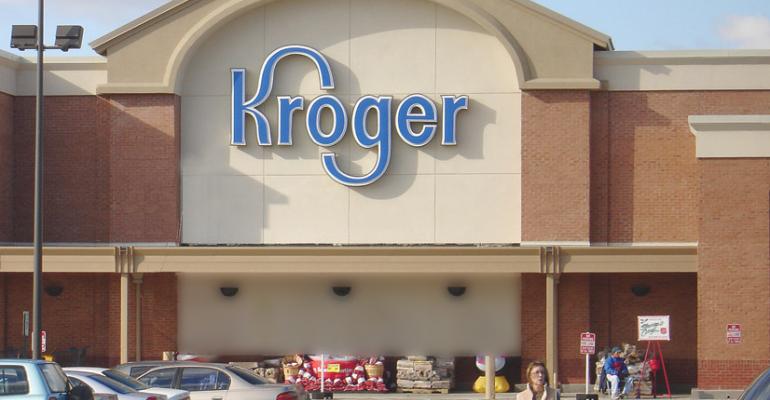Both Kroger Co. and Safeway said they plan to increase capital spending in the range of 10%-plus in 2013, while Wal-Mart cuts back.
At Pleasanton, Calif.-based Safeway, new initiatives such as pharmacy-area upgrades and a new layout for Center Store, as well as technology investments in the Just for U marketing initiative, are driving spending, even as the company enjoys longer life from the Lifestyle remodels it began rolling out in 2006.
Safeway said it expects to spend between $1 billion and $1.1 billion on capital expenditures in 2013, vs. $928 million in 2012. That spending will include about $250 million on new stores — up $60 million over 2012 — and $260 million on remodels — up about $44 million over last year, the company told analysts at its investor conference this month.
The Center Store remodeling effort, which includes realigning merchandise into three core areas that are linked to perimeter departments — will comprise a “significant percentage” of the spending on remodels, Robert Edwards, president of Safeway, said at the conference.
Both Safeway and Kroger are also investing more in new stores this year, analysts noted.
Kroger said it plans to open 45 to 50 new stores — including major expansions and relocations — in 2013, vs. 44 new, relocated or expanded stores opened in 2012. The Cincinnati-based retailer projected capital spending of $2.1 billion to $2.4 billion in 2013, up from $2 billion in 2012 and $1.9 billion in 2011.
Kroger has not yet detailed how its capital spending will be allocated in 2013 among new stores, remodels, technology and other investments, but both Safeway and Kroger appear to be shifting slightly toward greater investment in new openings.
More news: Kroger Drives Sales Gains in Q4
“It looks like there may be a little bit of a ramp [in new store openings], because they both are in a good position,” said Karen Short, a New York-based analyst with BMO Capital Markets, in an interview with SN. “Safeway is now finally in a good position, and Kroger has been in a good position for a while.”
She noted that Kroger’s capital investments, while accelerating new-store development slightly in 2013, are also being invested now toward more store development in the following years.
Kroger last year said it had largely completed a process of closing underperforming stores on a wide scale and thought it might record a net gain in store count. It did not do so in 2012 — dropping 11 net units to 2,424 supermarkets at year-end, from 2,435 at the end of 2011.
At Safeway, Short noted that projected capital spending as a percent of non-fuel sales will actually remain about flat at 2.7% in 2013, although spending on new stores will increase to 24% of total cap-ex, up from 20% last year, and spending on remodels will increase to 25% of the total, up from 23% in 2012.
More news: Safeway Highlights Wellness
She said that although some analysts and investors have suggested that Safeway has been underinvesting in recent years, she disagrees.
“One of the common themes seems to be that they have underinvested, and that’s just not true,” she said. “They overinvested for a period of time [during the Lifestyle remodel rollout], but they have not underinvested.”
In its investor conference earlier this month, Safeway said the higher investments it made in its Lifestyle remodels will reduce the need for certain capital improvements in the coming years.
“Based on the money that we’ve spent Lifestyling the stores, we believe that we have the best assets in this industry,” Edwards said. “Historically in our business, you need to remodel the store about every seven to 10 years. With the Lifestyle stores, we think we’ll get 10 years-plus out of those assets.”
Safeway said it expected to remodel about 250 stores with its new Center Store configuration this year, in additional to another 100 that will be remerchandised to skew to a more upscale clientele as part of a new “clustering” effort.
While Kroger and Safeway are both investing slightly more in new-store development, but keeping cap-ex in the range of 2% to 3% of total sales, faster-growing chains like Whole Foods and The Fresh Market are spending a much higher percentage.
In a presentation at the Bank of America Consumer Conference last week, The Fresh Market, Greensboro, N.C., said it expects to open 19-22 new stores in fiscal 2013 and spend between $130 million and $150 million on cap-ex, or about 10% or more of its projected sales for the year, which ends next month. That’s nearly double the $81 million it spent in fiscal 2012, and slightly higher as a percent of sales.
The company has said it is targeting 15% growth in new stores in the coming years.
Bentonville, Ark.-based Wal-Mart Stores, meanwhile, recently said its capital expenditures were decreasing as it has become more efficient in its expansion.
More news: Wal-Mart Widens Price Gap Over Target
In another recent investor conference, Charles M. Holley, Wal-Mart’s chief financial officer, said Wal-Mart is projecting that cap-ex spending would be flat or could even decelerate slightly in the current fiscal year, to a range of $12 billion to $13 billion, vs. $13 billion last year.
“We’re really focused on getting more for our dollar,” he said, noting that the company has reduced the cost of remodels by 50% in the last two years.
“How we’ve done that is to make sure that our remodels are focused on areas that are very important to the customer,” he said. “Those areas that aren’t, we don’t want to spend it on.
“Also, we’re very focused on reducing the cost of building stores by 10%. We’d like to do that over the next 12 to 18 months.”
| Suggested Categories | More from Supermarketnews |
 |
|

|
|





